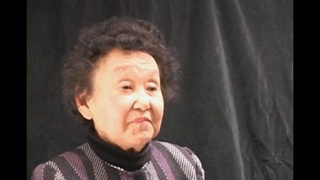Interviews
Helping youth in the community
Well…you know, one reason I look back and when you…you lose your father at 6 years old and you lose your mother when I was 12 and from that day on, I had to be dependent on my relative and uncle, whatever. And I had to learn how to get along. I had to. …taught me. Good thing my uncle – all of them were well to do and…but some uncle – pretty mean. But I was able to get along with all of them. And then I think it goes…I’m getting along with their kids or my cousin or whatever the case may be. It’s a good feeling that you want to keep all the family together, it had a warm feeling. It’s nice. If you like to do more to support them was my family and other people but I look forward to whenever they need help I sure like to do my part and to help them out. So this part…this volunteer work serving the youth in the community I think is…we do these things so that if we could see one kid not going into the gang or to guide him to the right direction, I think it a big plus.
Date: June 17, 2008
Location: California, US
Interviewer: Janice Tanaka
Contributed by: Watase Media Arts Center, Japanese American National Museum










